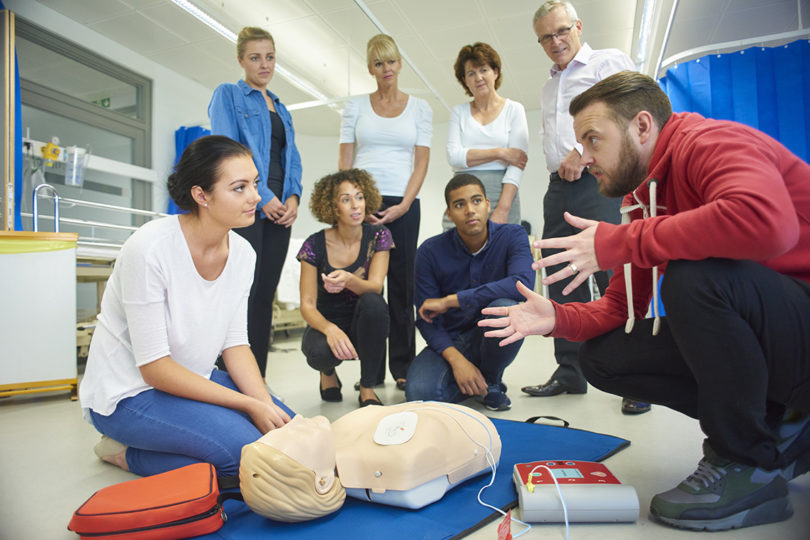2017 was a record-breaking year for disasters. The U.S. experienced three major hurricanes, out of control wildfires, flooding, mudslides, and two of the deadliest mass shootings to date. All told, these events caused billions of dollars in damage and cost many lives.
That means training people who are not traditional “first responders” to help injured people get to a safer place or perform life-saving interventions, said Curt Harris, who is the associate director of UGA’s Institute for Disaster Management in the College of Public Health.
Sometimes, friends and neighbors are in a better position to react to an event than firefighters or emergency medical personnel, said Harris, who published his case for more civilian training in the International Journal of Environmental Research and Public Health. For example, bystanders who pitched in to help stop bleeds and evacuate victims from the scene before responders could arrive saved lives in the wake of the Boston Marathon bombing.
“It’s about empowering knowledge,” he said.
Harris and his co-authors propose adding a universal disaster response training and education curriculum to existing first aid curriculum in high schools. Currently, 32 states require that high school students complete CPR training before they graduate.
“We’re not looking to reinvent the wheel, but for someone to understand how to open up an airway, how to stop a bleed, these are things that we know to be lifesaving,” he said. “Whether it’s a tornado, a shooter or a bombing event is irrelevant. These are the interventions that save people’s lives.”
Harris feels confident this type of training would stick with high school students into early adulthood because of how common disaster events have become.
“I think disasters have become so ubiquitous in our culture that it’s necessary to learn these skills at an early age so they can be put into practice when the time comes,” he said.
This “new” disaster training is not meant to stand alone. The goal is to broaden the emergency response workforce, and anyone trying to implement this curriculum should partner with existing emergency management community/organizations.
“It takes a village. There is no one discipline, no one set group of people who manage an event,” said Harris. “This has the opportunity to be a force multiplier for our health care and emergency management community, and I think that’s one of the major advantages.”
The paper, “Expanding Understanding of Response Roles: An Examination of Immediate and First Responders in the United States,” was published March 16, 2018. It is available online at http://www.mdpi.com/1660-4601/15/3/534.
Co-authors include Kelli McCarthy, Parker Prins and Tawny Waltz with UGA’s Institute for Disaster Management; and E. Liang Liu, Kelly Klein and Raymond Swienton with the University of Texas Southwestern Medical Center.








